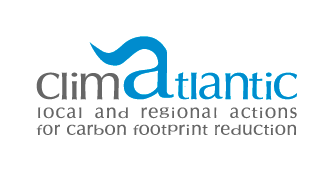NEWS & EVENTS : GENERAL INFORMATION

Strengthening Europe's preparedness against natural and man-made disasters
05.03.2013
The European Commission has presented a package consisting of two parts: The EU strategy on adaptation to climate change sets out a framework and mechanisms for taking the EU's preparedness for current and future climate impacts to a new level; and, in a related measure, the Commission also adopted a Green Paper on insurance in the context of natural and man-made disasters. This public consultation launches a wide debate on the adequacy and availability of existing insurance options.
climatlantic //
Connie Hedegaard, European Commissioner for Climate Action, said: "Cutting the world's greenhouse gas emissions must remain our top priority in order to keep global warming below 2°C and avert dangerous climate change. But the adverse impacts of the changing climate are increasingly evident today in Europe. Adapting to these changes is one of the most fundamental challenges for territorial development in Europe. Our strategy will help decision-makers in Europe to choose the best solutions to the benefit of their citizens. This will stimulate growth and jobs and prevent potentially high human, economic and environmental costs later on."
Internal Market and Services Commissioner Michel Barnier said “Natural and man-made catastrophes are on the rise, while the capacity of the insurance sector to insure against them is not fully utilised. European-level solutions to bridge the insurance gap need to be explored, along with common means of prevention and ways of raising awareness among citizens and companies. This Green Paper launches an important debate on the issues and will also allow us to get a more complete overview of the situation in different Member States.”
Kristalina Georgieva, European Commissioner for International Cooperation, Humanitarian Aid and Crisis Response, said: "Well-designed insurance policies can also work as a market-based instrument to discourage risky behaviour and promote risk awareness and mainstream disaster-proofing in economic and financial decisions."
Strategy focuses on three key objectives
· Promoting action by Member States: The Commission will encourage all Member States to adopt comprehensive adaptation strategies (currently 15 have strategies) and will provide funding to help them build up their adaptation capacities and take action. It will also support adaptation in cities by launching a voluntary commitment based on the Covenant of Mayors initiative.
· 'Climate-proofing' action at EU level by further promoting adaptation in key vulnerable sectors such as agriculture, fisheries and cohesion policy, ensuring that Europe's infrastructure is made more resilient, and promoting the use of insurance against natural and man-made disasters.
· Better informed decision-making by addressing gaps in knowledge about adaptation and further developing the European climate adaptation platform (Climate-ADAPT) as the 'one-stop shop' for adaptation information in Europe.
Creating jobs, saving costs
The strategy puts strong emphasis on adaptation options that are low-cost, good for the economy as well as the climate and which make sense for a variety of reasons. It will promote sustainable growth, stimulate climate-resilient investment and create new jobs, particularly in sectors such as construction, water management, insurance, agricultural technologies and ecosystem management.
Estimates of future costs and benefits indicate that each euro spent on flood protection could save six euros in damage costs. Floods killed more than 2,500 people, affected more than 5.5 million and caused direct economic losses of more than €90 billion over the period 1980-2011. The minimum cost of not adapting to climate change is estimated at €100 billion a year in 2020 and €250 billion in 2050 for the whole EU.
Green Paper on disaster insurance
Like many other regions of the world, the European Union is vulnerable to nearly all types of natural disasters. Disasters not only cause human losses but also damage to the value of billions of euros every year, affecting economic stability and growth. Disasters may have cross-border effects and can potentially threaten entire areas in neighbouring countries. Even where costs of major disasters are locally concentrated, if costs are inadequately covered by insurance then individual Member States may carry large fiscal burdens, which could cause internal and external imbalances. This is thus an important issue for citizens, companies and governments across the Union.
The Green Paper poses a number of questions concerning the adequacy and availability of appropriate disaster insurance. The objective is to raise awareness and to assess whether or not action at EU level could be appropriate or warranted to improve the market for disaster insurance in the European Union. More generally, this process will also expand the knowledge base, help to promote insurance as a tool of disaster management and thus contribute to a shift towards a general culture of disaster risk prevention and mitigation.
Next steps
The Communication setting out the adaptation strategy is addressed to the other EU institutions for their responses. The Commission will hold a stakeholder conference on the strategy on 29 April in Brussels.
The Green Paper public consultation is open until 30 June 2013. Once the Commission has examined the responses received, it will decide on the most appropriate follow-up, which could take several forms, legislative and non-legislative.








